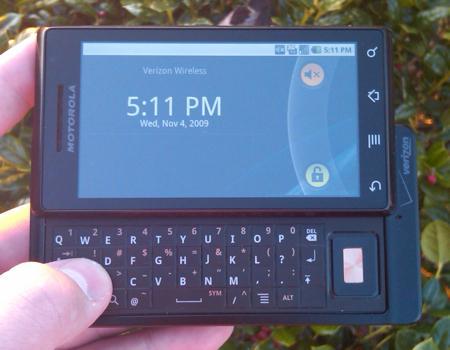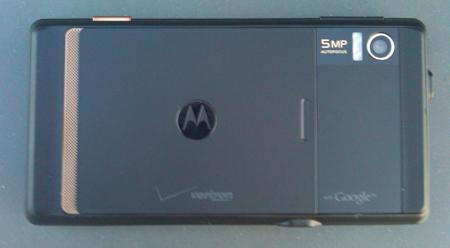
The Droid by Motorola is arguably Verizon's largest launch in recent memory. Huge ad campaigns (some of which are getting them into legal hot water), early retail store openings, and more, the smartphone is Verizon's flagship for the rest of the year. What's more, the success of the Droid is incredibly important for Motorola, as they've struggled to retain a competitive edge since the launch of their RAZR device in 2004 (I know, I can't believe it has been five years either).
The Droid is the first retail device running Android 2.0 out of the box, and in my opinion, is the best Android device on the market. It appeals to all demographics with its neutral design (more on that later), feels sturdy, and feels like it's worth $199.99. It's a business device just as much as it is a consumer one.
What I like about the Droid: The design, the OS, and the beautiful screen
The Droid is the most well-built Android device to date, period. Sporting metal, glass, and a minor amount of plastic on the back, the Droid houses an absolutely gorgeous 3.7-inch WVGA display, and gives off a vibe of an expensive phone. I've always argued that the Android platform suffers from a lack of professional devices, and the Motorola Droid (along with the Sprint HTC Hero) does a good job of filling that gap, thanks to the design and Exchange support. Despite the fact that Android still retains a "geek" appearance to an extent (that is, it's still not as user friendly as other devices), Android 2.0 does a good job of shortening the divide.
For me, one of the most notable improvements in Android 2.0 is the support for multiple Gmail accounts. As a BlackBerry user, I'm used to strong e-mail support, but it was always frustrating to be limited to one push Gmail account on previous Android devices. I have five Gmail accounts, and it always left me prioritizing which one was the most important of the bunch.
What I dislike about the Droid: The keyboard and the battery life
The Droid's physical keyboard may be a challenge for some. Granted, the "different strokes for different folks" philosophy applies here, but the Droid's keyboard is flat, and was hard to reach with my right thumb due to the placement of the D-pad. The phone offers an on-screen keyboard that works in both portrait and landscape modes, and it's also a love or hate thing. If you're used to the fluidity of the iPhone keyboard (sorry, the Verizon ads force me to compare it), you may not like it. I will argue this point as long as I'm in the industry: there's always going to be a contingent of users that prefer a physical keyboard to a virtual one. I happen to be in that group, and for me, the stock virtual keyboard on the Droid doesn't cut it. There are plenty of alternate solutions, so I'm sure that those familiar with the process have already considered this.
Simply put, the battery life isn't great on the Droid. With a full charge, I was able to make it about 9 hours before the phone powered off. I understand that Android devices are loaded with widgets and that, along with the ability to multitask, makes the battery decline significantly faster than similar devices on the market. Having said that, the potential inability to make it through the day with a moderate level of use may be frustrating to road warriors and those away from charging solutions.
Conclusion: My favorite Android device
The build quality, beautiful screen, and overall design make this my absolute favorite Android device on the market today. If I was to purchase a device on my Verizon account (and it wasn't a BlackBerry, of course), the Motorola Droid would be my first choice. It just feels good. It's a sturdy device, and appeals to the professional crowd with Exchange support and a modest look (a demographic that Android needs to take advantage of).
Stay tuned for my full review, coming soon!

